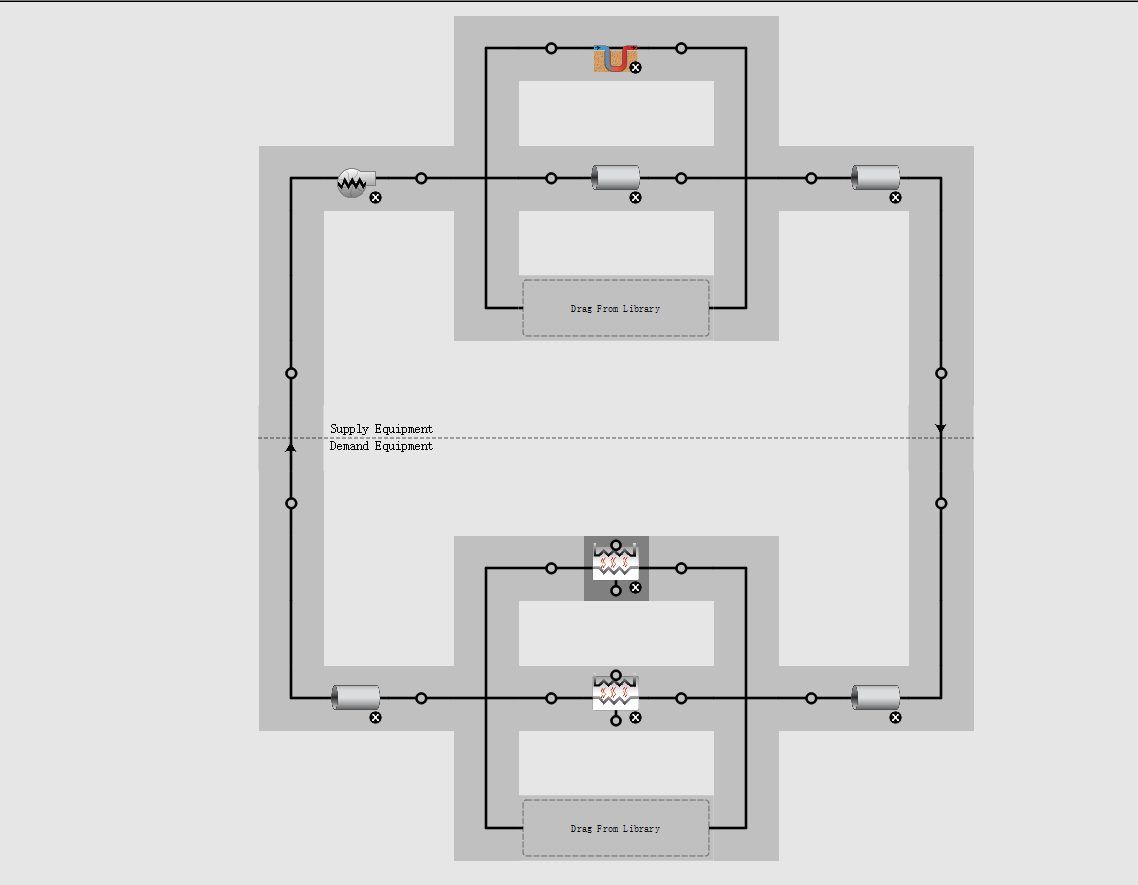Some confusions about Ground Source Heat Pump in OS
- In OS, the cooling and heating module of heat pump are separated. So it seems that I have to create two plant loop for cooling and heating respectively. But it brings the problem that there're two circulation pumps, for heating and cooling respectively, while in fact cooling and heating use the same pump. So how can I solve this problem?
2.In the condenser loop, can I model it like the screenshot shows? If can't, should I create two condenser loops for heating and cooling respectively? But if two condenser loops are created, the scenario of duplicated pumps occurs again.It really confused me!








